
DR Horton builds house with grass-based ceiling and wall panels
[ad_1]
North Carolina firm DR Horton has begun construction on a residential home using building materials from local technology studio Plantd, including panels made from compressed perennial grasses.
DR Horton, which claims to be the United States’ largest homebuilder, has begun using panels produced by Plantd. These are made by compressing large amounts of fast-growing grasses and can replace traditional materials used for walls and ceilings.
The construction company has started to use the product in a series of homes in North Carolina, where Plantd said the panels act as instant replacements for standard oriented strand board (OSB) and plywood.
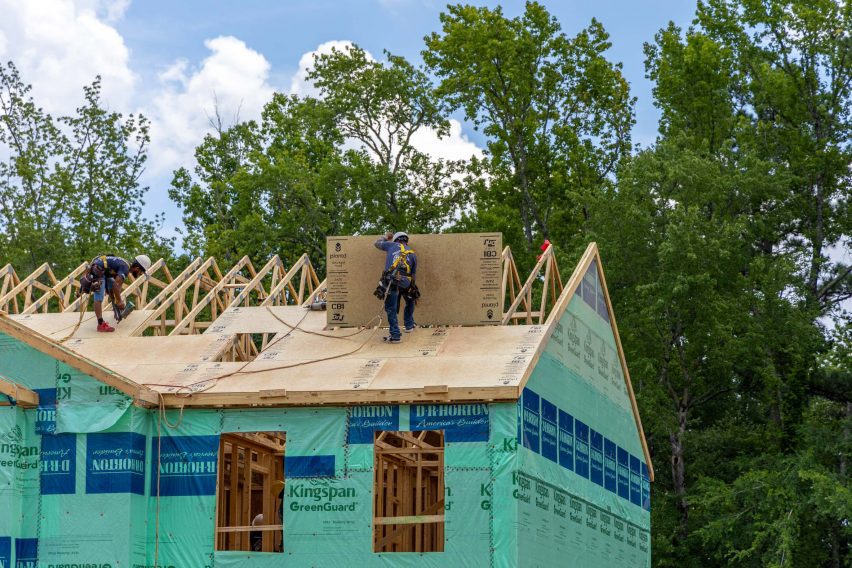
Plantd, which includes two former SpaceX engineers among its cofounders, says that moving reliance from trees in homebuilding and the carbon capture potential of the product could signal a change for the better in the construction industry.
“We’re hopeful that when the largest homebuilder in the country commits to building over a thousand new homes with a building material that can transform new houses into front-line climate change solutions, storing vast amounts of carbon dioxide removed from the atmosphere within their walls and roofs, the rest of the industry will take notice,” said the team.
“Our current estimates are that 70 per cent of the carbon dioxide captured on the farm via photosynthesis is retained in the structural panels that leave our facility.”
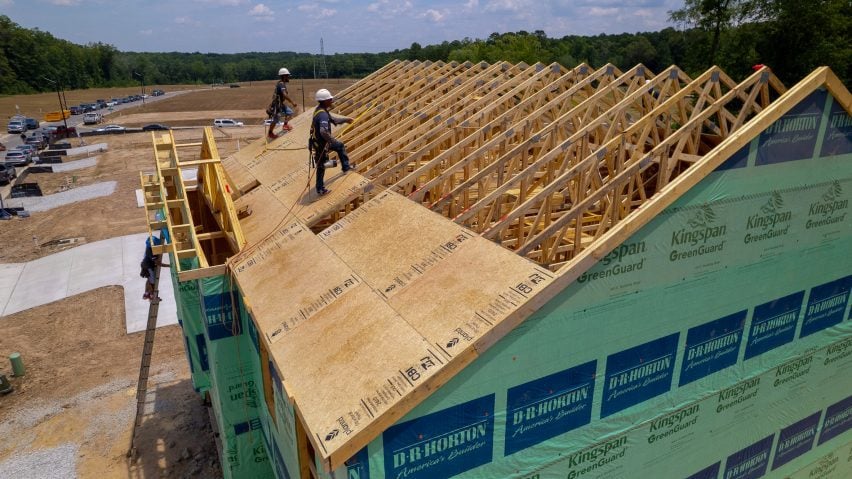
Plantd grows and harvests its own grass products and constructs its own production machines, each of which can produce a panel a minute, according to the company. Currently, the company is working on a new, all-electric facility with 50 production lines planned in the next few years.
In order to produce one of the standard four-by-eight-foot (1.2 by 2.4 metre) panels, around 50 pounds (22.6 kilograms) of grass is pushed through machines and bound through pressure and heat.
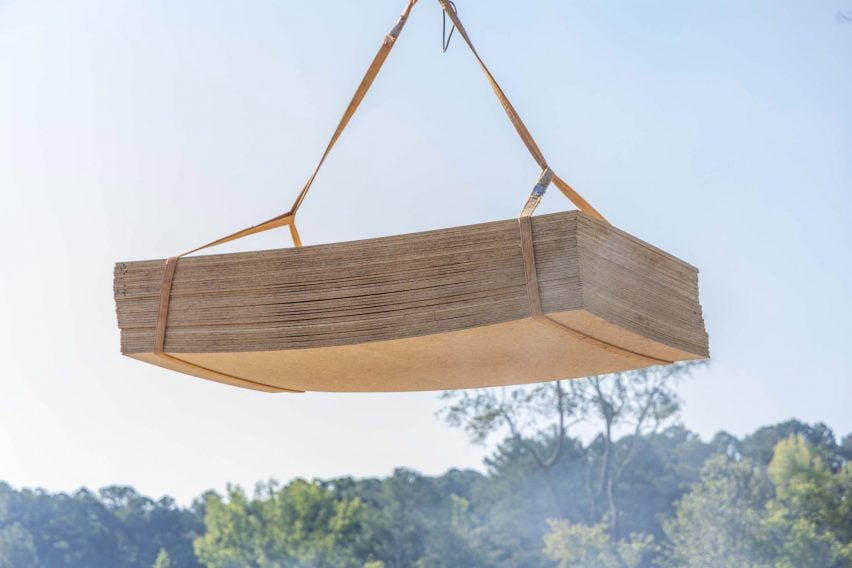
While hard to estimate because of the variety in tree sizes and wood yields, the company estimates that its panels could replace 16-17 trees per house that use around 175 panels for walls and roofs.
The company also has a lab where it tests the biomass of the perennial grasses, and claims that the panels it is currently producing are “more durable and moisture-resistant” than what’s currently on the market.
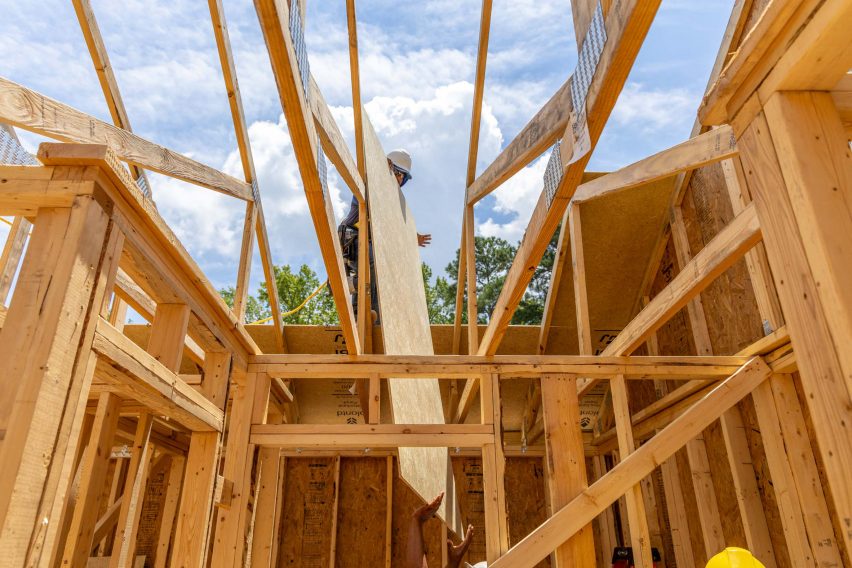
It also said that it is working with tobacco growers in the southern United States that are “interested in switching to a climate-smart crop that is more environmentally and economically sustainable”.
The current DR Horton project in North Carolina has produced a single house so far, but Plantd said that after the successful installation, the building firm has committed to purchasing 250,000 panels to be installed in over a thousand single-family homes.
Plantd said that its holistic supply chain was an essential motivator for DR Horton.
“We spent a lot of time with DR Horton, showing and explaining the new value chain we’re establishing, which is effectively the secret sauce that allows us to introduce superior-performing, carbon-negative materials,” said Plantd.
“Builders are also enthusiastic about not having to cut down trees to build homes. Plus, they like that we can offer stable pricing because we control our entire value chain.”
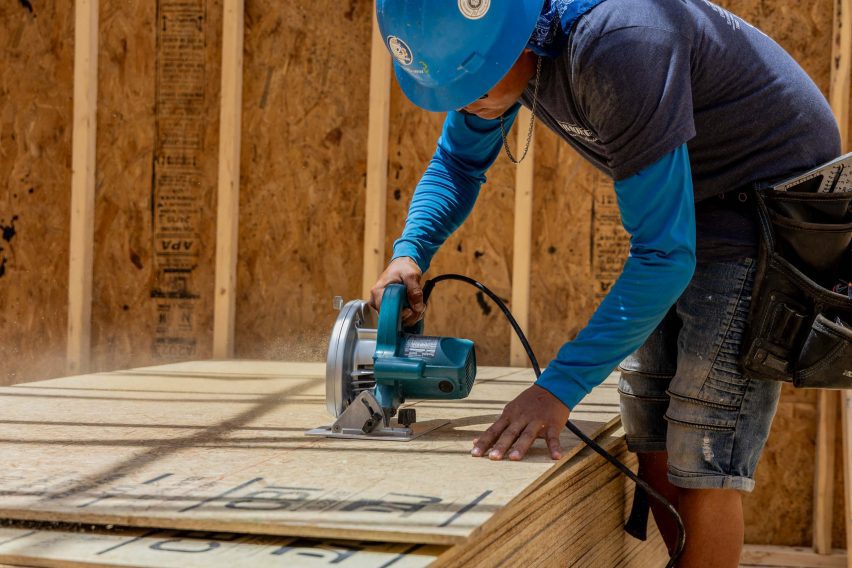
Plantd’s panels come at a time when a wave of engineered wood products such as mass timber are sparking conversations about rethinking the way we construct our built environment. Dezeen’s Timber Revolution series looked at how the wooden material is being used now and how it could be used in the future.
However, some have cautioned against expanding the suburban sprawl that comes with the construction of single-family residences. Former US president Barack Obama said last year, during a speech at AIA’s conference in Chicago, that “[s]prawl in America is not good for our climate”.
The photography is courtesy of Plantd.
[ad_2]





